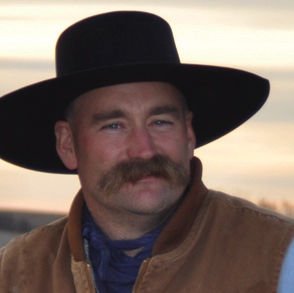Time to celebrate life
I am writing this from the Baltimore airport as I wait on my return flight to Nebraska. I flew east to judge The Great Frederick Fair. While it is technically a county fair in Frederick, Maryland, it is actually as big as some state fairs around the country.

Interestingly, a very common question I heard from Uber drivers, food preparers and hotel desk clerks was, “Seriously, you come all the way from Nebraska to judge a pig show?” The short answer is yes. The long answer is coming up.
First, I need to share that I have very much enjoyed judging at the Maryland State Fair for the past two years. Maryland is an interesting state as there is a tremendous amount of agriculture yet the pressure on the farming sector from urbanization is simply crazy. My quick answer in responding to these questions is that judging the Frederick Fair was not about pigs at all, but it was about people. I have many friends in Maryland that I enjoy spending time with and, of course, I love working with the show kids.
Frederick is home to much of our nation’s history and I don’t think people from outside this area realize that. During the Revolutionary War, Frederick was the key location for a barracks that held the prisoners of war from Britian. During the War of 1812, the second war against Great Britian in a short time, Francis Scott Key wrote the Star Spangled Banner in Frederick. Fredrick was also home to key battles during the Civil War including the first raid in the East with John Brown at Harpers Ferry.
Aside from the political history, it’s interesting that The Great Frederick Fair dates back to June 1821 when the farmers that made up the Ag Society recognized the need to showcase agriculture as a means of national security. That’s over 200 years of tradition in promoting agriculture. The importance of beef cattle for meat and sheep production for fiber was the true focus in the early years and that was followed shortly by the importance of fruit production. My message during the pig show was that we need to focus on the youth that participate in these events because our nation has lost its work ethic, and this is the greatest avenue for getting it back.
One other thing happened that I found significant. Located near the sheep, dairy and pig barn was the birthing pavilion. As the Jersey cow gave birth to a healthy calf, the crowd grew extremely large trying to get a picture or a video of this new life making its appearance. At about 7:40 p.m., a Tamworth sow started farrowing and, despite the rain, folks just started gathering like they knew something big was happening. She ended up with a great litter of 10 but what I figured out is that people are still intrigued with “life.” That is ultimately what we do in agriculture: create and maintain life.
We create life and eventually it is followed by death because only in death does something else live. It stems from the creation God gave us and our role on earth is to manage that creation to support life as best we can. The more plants we have, the more animals that are sustained. The number of animals that are created has a direct effect on the number of humans the earth can support.
The earth is not even close to the maximum number of humans we can maintain if we stop the policy makers who are trying to put a stranglehold on our capacity to produce food. It is beyond high time that we truly celebrate life being created on a daily basis.
Editor’s note: The views expressed here are the author’s own and do not represent the views of High Plains Journal. Trent Loos is a sixth generation United States farmer, host of the daily radio show, Loos Tales, and founder of Faces of Agriculture, a non-profit organization putting the human element back into the production of food. Get more information at www.LoosTales.com, or email Trent at [email protected].